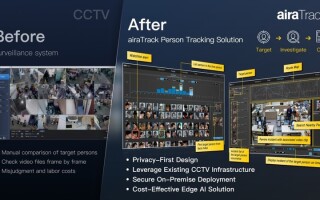Spectrum Instrumentation's digitiser is key to breaking record for world's highest ever, indoor magnetic fields by the University of Tokyo
October 12, 2017

Digitiser provides sub-nanosecond precision
| The large capacitor banks that are used to generate the ultra-high magnetic fields of the MegaGauss machine |
| The Spectrum digitizerNETBOX is located close to the large capacitors and housed in a shielded enclosure to avoid EMI. LXI control allows easy operation with a Notebook PC or via a connection to the laboratory network. |
The International MegaGauss Science Laboratory, part of the Institute Solid State Physics (ISSP) at the University of Tokyo, is attempting to set a new world record for the highest ever, indoor magnetic field. To do this, the ISSP needed to improve the precision of the firing processes with sub-nanosecond measurements and has installed a Spectrum Instrumentation digitiser to achieve this. The fields are used to study the physical properties of solid-state materials as they are subjected to ultra-high magnetic fields and researching new materials and controlling their phase and functionality. The laboratory's pulse magnets can currently generate up to 87 Tesla (T) by non-destructive methods, and from 100 T up to 760 T (currently the world record for the strongest field generated indoors) by a destructive process.
To optimize the magnetic fields generated by the laboratory's MegaGauss machine, the trigger events that fire banks of large capacitors have to be triggered within 10ns of each other. To achieve this high level of precision, the trigger signals for each capacitor have to be examined to determine their key characteristics and timing relationships to ensure optimal firing every time as the physical parameters of the MegaGauss machine restrict firing to just a few shots per day.
In order to capture and analyze the trigger signals, ISSP required a fully synchronous, 10 channel digitizer system that delivers a single shot sampling rate in excess of 1 GigaSamples per second (GS/s). The high sampling rate allows the shape and frequency content of individual trigger pulses to be revealed, while fully synchronous sampling ensures inter-channel timing measurements can be consistently made with sub-nanosecond precision.
A further complication is the fact that the MegaGauss machine generates dangerously high magnetic fields that are potentially unsafe and can easily interfere with the measuring instrumentation. Great care needs to be taken to shield both equipment and operators. The measurement system needs to be located in the laboratory while the operator adjusts and monitors the experiments from the safety of a control room. As such, the digitizer system must be able to operate remotely and controlled over the laboratory's network.
The solution was the DN6.221-12 digitizerNETBOX system from Spectrum Instrumentation, the pioneer of perfect-fit solutions. This unit met all the necessary technical requirements offering 12 fully synchronous channels, each sampling at 1.25 GS/s. As digitizerNETBOX units are LXI compliant instruments, they allow full remote control and data transfer over a Gbit Ethernet connection.
The digitizerNETBOX systems offer significant advantages over other digitizers as they provide a turnkey solution to multi-channel acquisition. Users can select the desired number of digitizer channels as well as fundamental specifications such as the sampling rate, resolution and on-board acquisition memory.
The units also come with SBench 6-Pro software that allows the user to quickly setup the system and start making measurements. SBench 6-Pro features an easy-to-use, graphical user interface that allows multi-channel waveform display, data analysis and documentation. Acquired and analyzed signals can be stored and exported to other devices, or other software programs, in a number of formats such as MATLAB, ASCII, binary and wave.
The laboratory is now able to further optimize the performance of the MegaGauss machine with the expectation that they will be able to generate the world's highest ever, in-door magnetic fields later in 2017.







